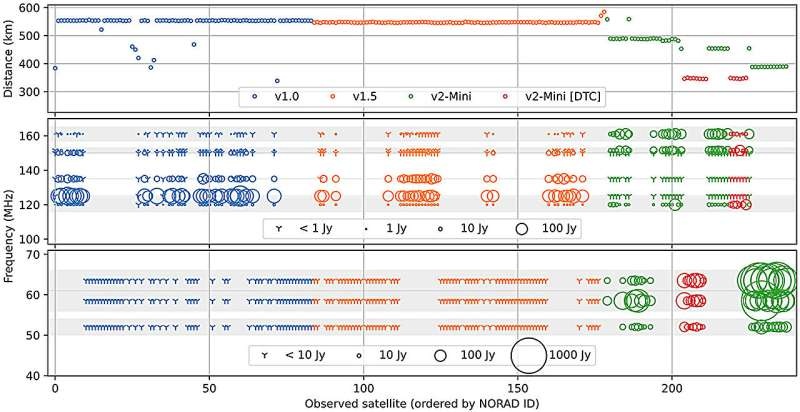Groundbreaking research reveals that the second-generation Starlink satellites are emitting up to 32 times more unintended radio waves than their predecessors, posing a serious threat to astronomical observations and jeopardizing our understanding of the universe.

Starlink is Becoming a Nuisance
Alarming findings of the study, published in the prestigious journal Astronomy & Astrophysics show that consequences on radio astronomy will be substantial if Starlink’s satellites of the second generation take to space.
Employing the world’s largest radio telescope, LOFAR, scientists have observed that these new generation satellites are emitting unintended electromagnetic radiation at levels up to 32 times more intense than the stricter guidelines of their predecessors.
The astronomical community is also worried about this explosion of radio interference because it could “blind” their radio telescopes and jam their ability to study the mysterious universe. Compared to the faintest astrophysical sources we can observe with LOFAR, Starlink satellites have a 10 million times brighter UEMRariseg factor, and is equivalent to the difference between the bright full moon compared to the brightness of a few of the faintest stars naked eye.
The Race for the Skies
In the past few years, easy access to space and many commercially available satellites launched into low Earth orbit (LEO), together resulted in a multitude of LEO satellites. SpaceX and OneWeb are the two highest-profile backers behind the proliferation of hundreds or even thousands of satellites being prepared to fly for purposes such as global communications, with projections by some studies that there could be more than 100,000 in orbit by the end of this decade.
The expansion of artificial constellations has brought a genuinely worrying issue to the fore: the exponential rise in the number of satellites passing across orbital space for general astronomical purposes (and note that our technologies and their uses will be developing much faster). Because it seems that nearly all of the Starlink satellites observed by the LOFAR team were radiating unintendedly, which includes both first-gen and second-gen models, their observations stress once again that collaboration between satellite companies, regulatory agencies, and the astronomical community is urgently needed.
Conclusion
These results should alert us to protect the pristine radio astronomical environment, which is crucial for increasing our knowledge of the universe and understanding our place in it. Given the scope of satellite interference-related impacts, it is imperative for satellite companies, regulators, and the astronomical community to jointly develop mitigation approaches. We must come together as a species to ensure our skies remain a lens to discover the cosmos and not an artificial star cluster that obstructs the beauty of the universe for us.
